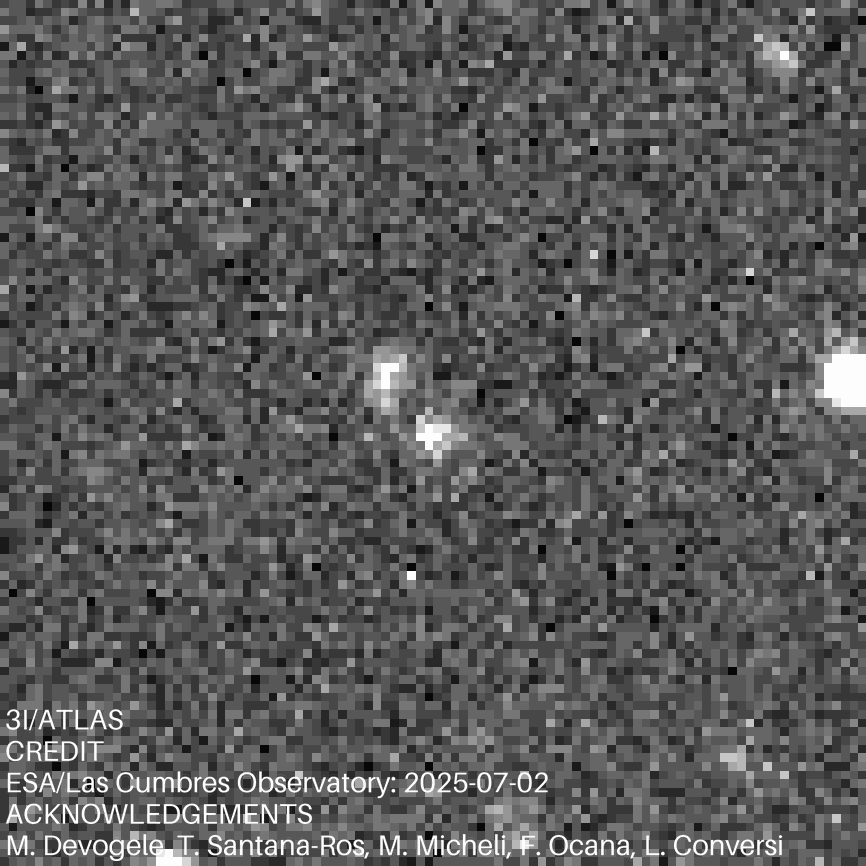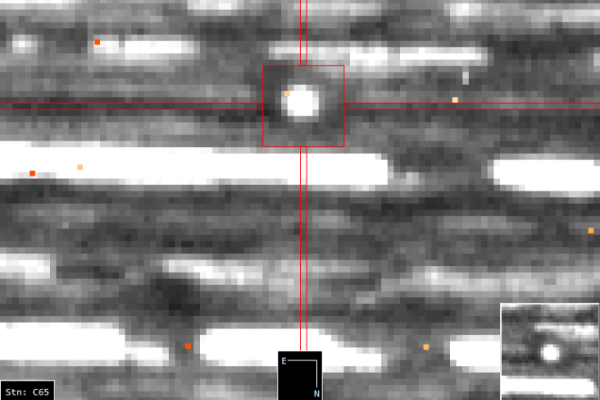A team of international astronomers has announced the discovery of a rare celestial visitor from beyond our solar system: 3I/ATLAS, the third known interstellar object ever detected. The discovery, made on July 1, 2025, by the ATLAS telescope in Chile, marks a major milestone in the study of cosmic bodies that originate outside our solar system.
3I/ATLAS joins the ranks of its famous predecessors, 1I/‘Oumuamua (2017) and 2I/Borisov (2019), but brings its own unique characteristics. Unlike ‘Oumuamua, which had an unsual shape and no visible activity, and Borisov, which behaved like a typical comet, 3I/ATLAS appears to be a large, faintly active object with a reddish surface and a relatively stable brightness.
With an estimated diameter of up to 20 kilometers, 3I/ATLAS is significantly larger than the previous interstellar objects. It is traveling at a blistering speed of 60 kilometers per second, confirming its origin from outside the solar system. Its trajectory and composition are already providing scientists with valuable clues about the diversity of planetary systems beyond our own.
“3I/ATLAS represents the best opportunity we've had to study an object formed outside our Solar System. It's large (and therefore bright), active, and will be visible for the next few months, ensuring we have plenty of time for observation” said Toni Santana-Ros, researcher at the Institute of Cosmos Sciences of the University of Barcelona (ICCUB) and the University of Alicante (UA) and co-author of the study. “We're all excited about this opportunity, as it's expected to generate a wealth of data. Even medium-sized telescopes will have the chance to study this fascinating object!”

Early observations suggest that 3I/ATLAS has a reddish hue similar to ‘Oumuamua and shows faint signs of comet-like activity. However, its light curve—how its brightness changes over time—is remarkably flat, indicating a more spherical or much lower spin than its predecessors.
The observations of 3I/ATLAS were carried out using the Joan Oró Telescope (TJO), located at the Montsec Observatory (OdM) in Catalonia. This facility, operated by the Institute of Space Studies of Catalonia (IEEC), was instrumental in detecting and tracking the interstellar object, contributing crucial data to its discovery and characterization.
The object will be observable from Earth until September 2025, after which it will pass behind the Sun. It will reappear in November, offering astronomers another chance to study it before it leaves the solar system forever.
Scientists are calling on the global astronomy community to conduct further observations using telescopes and spacecraft, including those orbiting Mars, which 3I/ATLAS will pass near during its closest approach to the Sun.
Reference
Seligman, D. Z., Micheli, M., Farnocchia, D., et al. (2025). Discovery and Preliminary Characterization of a Third Interstellar Object: 3I/ATLAS. arXiv:2507.02757 [astro-ph.EP]. https://arxiv.org/html/2507.02757v1



